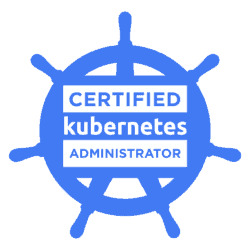CKA Exam Overview
The Certified Kubernetes Administrator (CKA) exam is the premiere certification to demonstrate a candidates skills with Kubernetes. The exam consists of a set of 15-20 multi-part real world tasks, which must be completed within 2 hours. The exam takes place in a live, multi-cluster Kubernetes environment. Candidates are only given command line access to the exam environment and are expected to have the efficiency to complete the majority of the tasks. Based on my CKA Exam review and experience, I believe this is one of the most rigorous exams I have encountered yet.
CKA Exam Review
The Linux Foundation (LF) and The Cloud Native Computing Foundation (CNCF) really brought their “A” game, when partnering to develop this exam. Not only is Kubernetes as a technology not very old, its still very much not mainstream. Nonetheless the packaged course work and exam itself provides a robust set of base knowledge that can probably lay the foundation for the start of a career at a modern company or startup. Or if your current company is trying to harness the cost saving power of moving to containerization in the cloud, this exam is also a good starting place.
Preparing for the CKA Exam
When it comes to preparing for the exam, you need to build a strong foundational knowledge through training and/or hands on experience. Part of the rigor of this exam is the sear fact that you will basically be typing non-stop for 2 hours straight in order to successfully complete the exam. If your not very comfortable completing tasks with kubectl, your not likely to pass the exam. When you believe your ready, I’d recommend running through some more practice questions. Just to build up your comfort and efficiency with kubectl commands.
I can’t stress enough, how much pressure is felt during these multi-part tasks as the clock ticks away. You will want to be able to complete the majority of the tasks quick enough to have time to check your work and than work through a few of the task you aren’t as sure about. Use your time wisely and use the CKA exam review feature that’s built into the exam platform. It allows you to mark items for review and add notes, so you can easily come back later.
Get used to the structure of the official kubernetes.io documentation and kubectl command line help. Even though there are tons of resources and communities for Kubernetes administration. These other resources are not available during the exam. So during exam perpetration, only use the official documentation. Limiting yourself, will only help improve familiarity and comfort as you work through more challenging exam tasks.
CKA Exam Resources
- Kubernetes the hard way – This is a great step by step guide to, setup Kubernetes manually. Highly recommended you work through a manual setup of Kubernetes from scratch at least once. There will likely be exam tasks around installing or fixing base services.
- The Linux Foundations Official Course – This is the most robust general knowledge based course I’ve seen. If you want to learn Kubernetes and how to do almost anything with it, get the CKA + CKAD combo package.
- CKA with Practice Tests – The top rated Udemy course for CKA. I highly recommend this course for those who may have some work experience with Kubernetes and want a course that teaches what is directly related to the exam. Its also worth while to pick up this course for the practice tests and exercises alone.
- CKA and CKAD Instructions – Review the exam instructions and information multiple times, before sitting for the exam. Not only do the exam instructions provide guidance as to what is required during the exam. But it also provides important information about about the exam environment and tips for using the exam platform.
- Kubernetes Documentation Tasks – These are the administration task guides as laid out by the Kubernetes developers. Not only should you be comfortable completing the majority of these tasks, but these task guides could prove to be a valuable resource during the exam.
- CKAD Exercises – Although not all exercises directly relate to the CKA exam, they offer a wide range of items to build comfort with the Kubernetes command line tools. What I like about these exercises is each represents an item that may be contained within an exam task. If your unsure, it provides the most direct way to complete the prompt in a hidden field.
CKA Exam Tips and Tricks
- Try to do everything with kubectl in order to increase your speed and accuracy. The majority (70-80%) of the exam should be completable with kubectl commands alone.
- ALWAYS run the context command at the top of every task, before completing any of the work. If your ever not sure, just run it again. A correct solution to an exam task, completed in the wrong context, likely wont be scored.
- The new exam interface is optimized to copy and paste custom strings, such as names, labels, metadata, etc. Utilize the feature heavily in order to avoid type-o’s during the exam.
- Read the task fully before beginning work. Things may need to be completed in a certain order or on certain nodes in order to fully complete the question.
- Above all priorities your time wisely. You are aloud to utilize the Kubernetes online and system documentation during the exam. But if you don’t know how to efficiently complete the prompt once you have fully read the task, then move on and come back to the task later.
